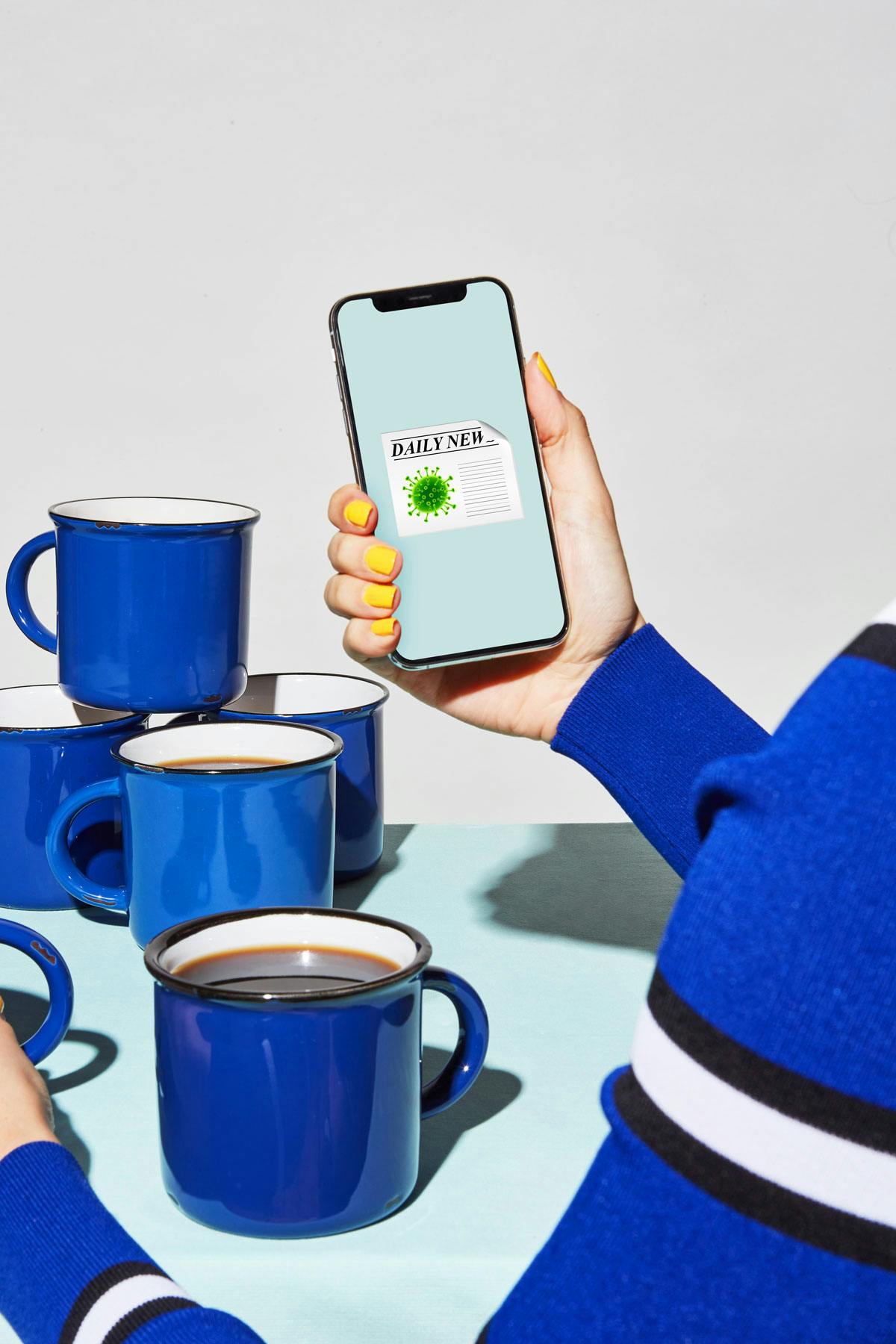VDF and Ron Arad present an exclusive video showing the development of Arad's Don't F**K With The Mouse chairs
Posted in: Uncategorized
Today VDF teams up with Ron Arad for the video launch of a new series of sculptural chairs – including one that commemorates Brexit – followed by a live interview with the designer at 2:00pm UK time.
The London-based designer and architect created the movie for VDF to explain how he developed the chairs, which were originally supposed to be exhibited at the OTI Gallery in Los Angeles. However, the show was cancelled due to the coronavirus pandemic.
New chairs are based on Arad’s classic Big Easy
The new series, called Don’t F**k With The Mouse or DFWTM, is based on Arad’s iconic Big Easy chair, originally created in 1988 and later launched with Moroso in 1991. The chair was nicknamed “Mickey” as the large, round arm rests made it resemble the Disney character.

Arad explains that when he first started making Big Easy, it was “very sketchy,” due to the poor welding quality his studio could achieve at the time. “But we loved it,” he said. “This is like the early days, I’m talking about before computers started invading our creative life.”
To create the new series, Arad has returned to working with a brush and paint just as he did in the early days when he first made Big Easy.
“A real treat” to go back to working with brush and paint
“It’s a real treat to go back to all these things that I love as much as I love the new technology, maybe more,” he said.
Working with technology is “very exciting,” Arad says. “But there’s always the making things by hand, the pen on paper, and the brushes and the colours, the other stuff that was really the beginning. The reason I find myself in this world is all to do with a 6B pencil and brush and wet paint.”

In preparation for the Los Angeles exhibition, Arad created a new chair each week as part of a series in celebration Mickey Mouse’s 90th birthday this year.
“I knew I couldn’t call it Mickey Mouse,” Arad said. “I called our IP lawyer and asked him. The lawyer confirmed that this was a bad idea, reciting the legal saying “Don’t f**k with the mouse”.
“I thought: that’s a much better name for the series!”
“You only see what you did when you take it off the mould”
The pieces are created in a mould that is lined with layers of fibreglass and polyester and finished with a gelcoat. Arad painted directly on the materials in mould, creating a different chair each week.
“You draw on the mould; on the parts in the mould,” Arad explained. “Everything you draw is going to come out a mirror image and also the order of the layers is back to front because you start with the first layer, then you cover it with another layer and another layer, another layer.
“And in the process, you cover the first layers. You can only really see what you did when you take it off the mould.”

Arad got into the routine of making a new chair every Friday, figuring out what he was going to do the night before to ensure each chair was different.
On Friday 31 January 2020, Brexit became a reality as the UK finally left the EU. Arad decided to commemorate the event with a chair featuring all the newspapers of the day.
“We did something that froze the day”
“On the way to the studio, we stopped at the petrol station and bought all the newspapers of that day,” he explained. All the papers were full of Brexit. Some of them were mourning, some of them were celebrating. It was a day we thought that will stain our lives forever.”
“So we took all the newspapers to the studio and started to rip them and collage them and embed them in the polyester. And we did something that froze the day.”
Arad’s previous projects include an office tower “inspired by an iceberg” and a set of “nesting” vases that slot inside one another.
Dezeen previously collaborated with the designer in 2010, creating an exclusive series of videos that explored the Ron Arad: Restless exhibition at the Barbican in London.
About Virtual Design Festival
Virtual Design Festival, the world’s first digital design festival, runs from 15 April to 30 June 2020. It is a platform that will bring the architecture and design world together to celebrate the culture and commerce of our industry, and explore how it can adapt and respond to extraordinary circumstances.
VDF will host a rolling programme of online talks, lectures, movies, product launches and more, complementing and supporting fairs and festivals around the world that have had to be postponed or cancelled and it will provide a platform for design businesses, so they can, in turn, support their supply chains.
To find out what’s coming up at VDF, check out the schedule. For more information or to join the mailing list, email vdf@dezeen.com.
Photography is by Michael Castellana.
Below is a transcript of Arad speaking the video:
“If you take the Big Easy chair – which by the way was nicknamed Mickey in the studio because it reminded people of Mickey Mouse – it started with drawings or the piece of paper. And then the quality of our welding those days was very poor. So it was very sketchy at the beginning. But that’s what we loved about it.
“Then it got better. And then it had lots of different takes on this Big Easy or the nicknamed Mickey chair. One of the takes of it was a series called New Orleans that was gelcoats, painting back to front in a mould, seeing what you did when you take it off the mould, and lots of nice surprises – mostly. This is the early days I’m talking about before computers started invading our creative lives and before, from a workshop where we did everything ourselves, we moved to make stuff in Italy by really, really good artisans and fantastic metalworkers.
“And not to talk about early rapid prototyping where we could model and print everything, not to talk about five-axis milling machines that model your handwriting, and a computerized woodpecker carves it. And yeah, the more sophisticated the machines get, the less machine-like the product is. We loved all that. Very exciting. But there’s always the making things by hand, the pen on paper, and the brushes and the colours, the other stuff that was really the beginning. The reason I find myself in this world is all to do with a 6B pencil and brush and wet paint.
“So this last series of Don’t F**k With The Mouse is a real treat to go back to all these things that I love as much as I love the new technology; maybe more. We started the routine of doing a Mickey chair every Friday. Michael and me drive to the studio in Wembley to make a chair of the series called Don’t F**k With The Mouse. The chair is done to celebrate Mickey Mouse’s 90th birthday. It’s an art take on it. It’s not a product or anything. It is a handmade piece. I’ll explain the handmade-ness of it, but it is clearly about Mickey.
“I knew I couldn’t call it Mickey Mouse. I called our IP lawyer and asked him. I can’t call it Mickey Mouse, but can we call it ‘Topolino’, which is Mickey Mouse in Italian, and he said, strictly speaking, you can. But in my profession, there’s a saying: ‘Don’t f**k with the mouse’. I thought: that’s a much better name for the series!
“Every Friday we go to Wembley and there’s a mould. There’s fibreglass and polyester and polyester gelcoat. You draw on the mould; on the parts in the mould. Everything you draw is going to come out a mirror image and also the order of the layers is back to front because you start with the first layer, then you cover it with another layer and another layer, another layer. And in the process, you cover the first layers. You can only really see what you did when you take it off the mould.
“So what happens on Fridays? We go to the studio. There’s the chair that we did the week before. Michael takes fantastic photographs of last week’s work and then records and helps with the doing of this week’s chair. Every Thursday night I have to think: what am I going to do tomorrow? I come up with different ideas that yes, they’ll be followed to a degree. Like one chair that we did was called Love Song: writing the word “song” that in a mirror image looks like “love” so the two ears of the chair spelt together “Love Song” and that totally identical but a mirror image.
“One day we did print something and embedded it in the polyester and gelcoat. And it says “A picture’s worth 1000 words” on both sides of the ears symmetrically. It’s really open but what is the same is the mould. What is exciting is that you spend time drawing with brushes and mixed colours and try things. It reminds me of the old days when everything started with drawing and sketches.
“Now it seems very difficult to remember that not so long ago we were having a big disaster. Friday happened to be the 31st of January, which was our last day in Europe. On the way to the studio, we stopped at the petrol station and bought all the newspapers of that day. All the papers were full of Brexit. Some of them were mourning, some of them were celebrating. It was a day we thought that will stain our lives forever.
“So we took all the newspapers to the studio and started to rip them and collage them and embed them in the polyester. And we did something that froze the day. I always like it when you do some things and you get surprised. You always imagined how is it going to look? How’s it going to look? And my favourite sentence: you always get better than you deserve, because there’s your will and then what really happens. And there’s sort of combinations and things that in reality, I have much better than what I could draw if I had more control.
“Anyway, this is a confession: I could only see one side of the newspaper but when it’s embedded in the liquid polyester, the page of the newspaper becomes transparent. There’s the image on the other side that appears as well. Two days later, when it was taken out of the mould, I looked at something I couldn’t have done better myself. We kept the newspapers to the back side, and the front was all black with ‘What now?’ When we did it, we thought it was a day to be remembered forever. Little did we know that something else was about to happen that made us almost forget about Brexit.”
The post VDF and Ron Arad present an exclusive video showing the development of Arad’s Don’t F**K With The Mouse chairs appeared first on Dezeen.































































